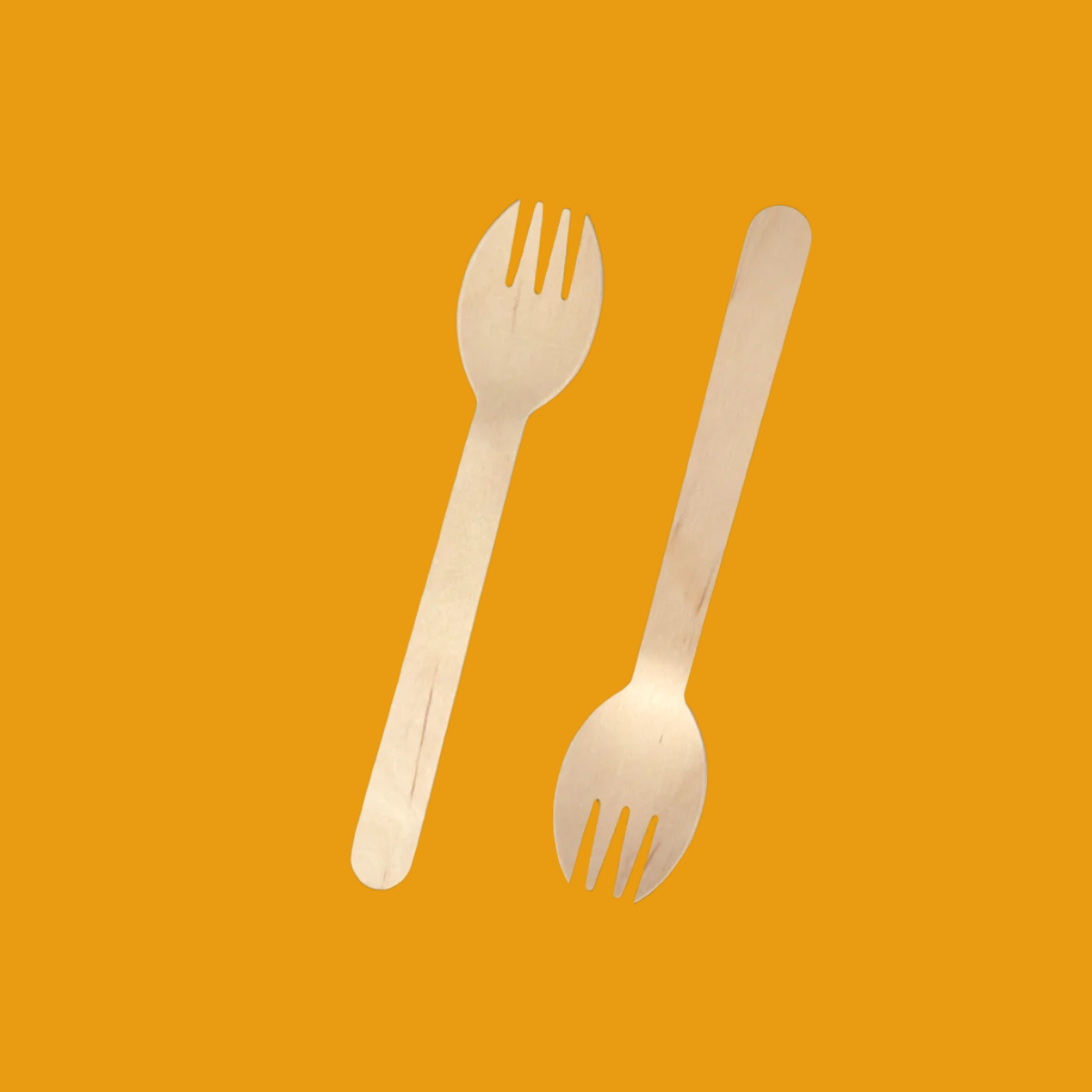Consumer attitudes towards eco-friendly cutlery have undergone significant shifts in recent years, driven by increasing awareness of environmental issues and sustainability concerns. This article explores the evolving consumer sentiments towards eco-friendly cutlery, highlighting key trends, motivations, and challenges in adopting sustainable utensils.
- What is biodegradable cutlery? Benefits that bio cutlery brings?
- Top 10 High-Quality Disposable Wooden Cutlery
- What Is Wooden Cutlery Made From? How Is Wooden Cutlery Made?
- Food Safety in Disposable Utensils. Tips for Using Disposable Utensils Safely
Survey Highlights Consumer Expectations On Single-Use Cutlery
A thorough study on single-use products was recently conducted by Celebration Packaging, a top supplier of packaging solutions. The results show that customers strongly expect food establishments to provide a selection of cutlery.
According to a survey by Sapio Research, more than half of the consumers questioned (53%) still expect restaurants and takeout to provide cutlery, while 46% said they would be willing to bring their own for on-the-go meal consumption.
More than half of the respondents said that reusable options like bamboo cutlery (54%) or metal cutlery (53%) were their preferred substitutes for single-use plastic cutlery.

Rising Demand for Eco-Friendly Cutlery
Environmental Awareness
Consumers are increasingly aware of the environmental consequences of plastic cutlery, which contributes to marine pollution and landfill waste. This awareness has prompted a demand for alternatives that minimize environmental harm.
Sustainability Concerns
The desire to reduce carbon footprints and support sustainable manufacturing practices is a significant factor in consumer choices. Eco-friendly cutlery made from renewable resources or recycled materials appeals to environmentally conscious consumers.

Government Regulations and Bans
Government regulations and bans on single-use plastics in many regions have accelerated the adoption of eco-friendly alternatives. Consumers are more likely to choose cutlery options that comply with these regulations or align with sustainable practices.
Motivations for Choosing Eco-Friendly Cutlery
Environmental Impact
Consumers choose eco-friendly cutlery (bamboo cutlery, wooden cutlery,...) to reduce plastic waste and lower their environmental impact. Materials like bamboo, wood, stainless steel, and compostable plastics offer viable alternatives to traditional plastic utensils.
Health and Safety
Some consumers prefer eco-friendly cutlery due to health concerns associated with plastic chemicals leaching into food. Materials like stainless steel and bamboo are perceived as safer and more hygienic options.
Ethical Considerations
Ethical considerations, such as supporting fair labor practices and sustainable sourcing, influence consumer choices. Brands that prioritize transparency and ethical production practices resonate with conscientious consumers.
Challenges in Adopting Eco-Friendly Cutlery
Cost
Eco-friendly cutlery often comes at a higher cost compared to conventional plastic utensils, which can deter price-sensitive consumers. However, as production scales up and demand increases, prices are expected to become more competitive.
Availability and Accessibility
Limited availability of eco-friendly options in retail stores and restaurants may hinder consumer access. Increasing distribution channels and partnering with eco-conscious retailers can improve accessibility.

Performance and Durability
Consumer perceptions about the performance and durability of eco-friendly cutlery compared to plastic alternatives may influence adoption rates. Educating consumers about the durability and usability of sustainable materials can address these concerns.
Consumer Behavior and Preferences
Preference for Compostable Materials
Consumers favor compostable materials like PLA (polylactic acid) and other bioplastics that break down naturally, reducing environmental impact. These materials offer a balance between usability and eco-friendliness.
Brand Reputation and Transparency
Consumers prioritize brands that demonstrate commitment to sustainability through transparent practices, certifications, and eco-labels. Trust in the brand's environmental claims influences purchase decisions.
Convenience and Usability
Ease of use and convenience play a crucial role in consumer acceptance of eco-friendly cutlery. Products that mimic the functionality of traditional plastic utensils while being eco-friendly are more likely to gain consumer acceptance.
Conclusion
Consumer attitudes towards eco-friendly cutlery are shaped by environmental awareness, sustainability concerns, and ethical considerations. Brands that align with these values and address consumer preferences for performance, cost-effectiveness, and convenience are poised to capitalize on the growing demand for sustainable utensils. As consumer education and product innovation continue to evolve, the market for eco-friendly cutlery is expected to expand, offering opportunities for businesses to meet consumer expectations while promoting environmental stewardship.









